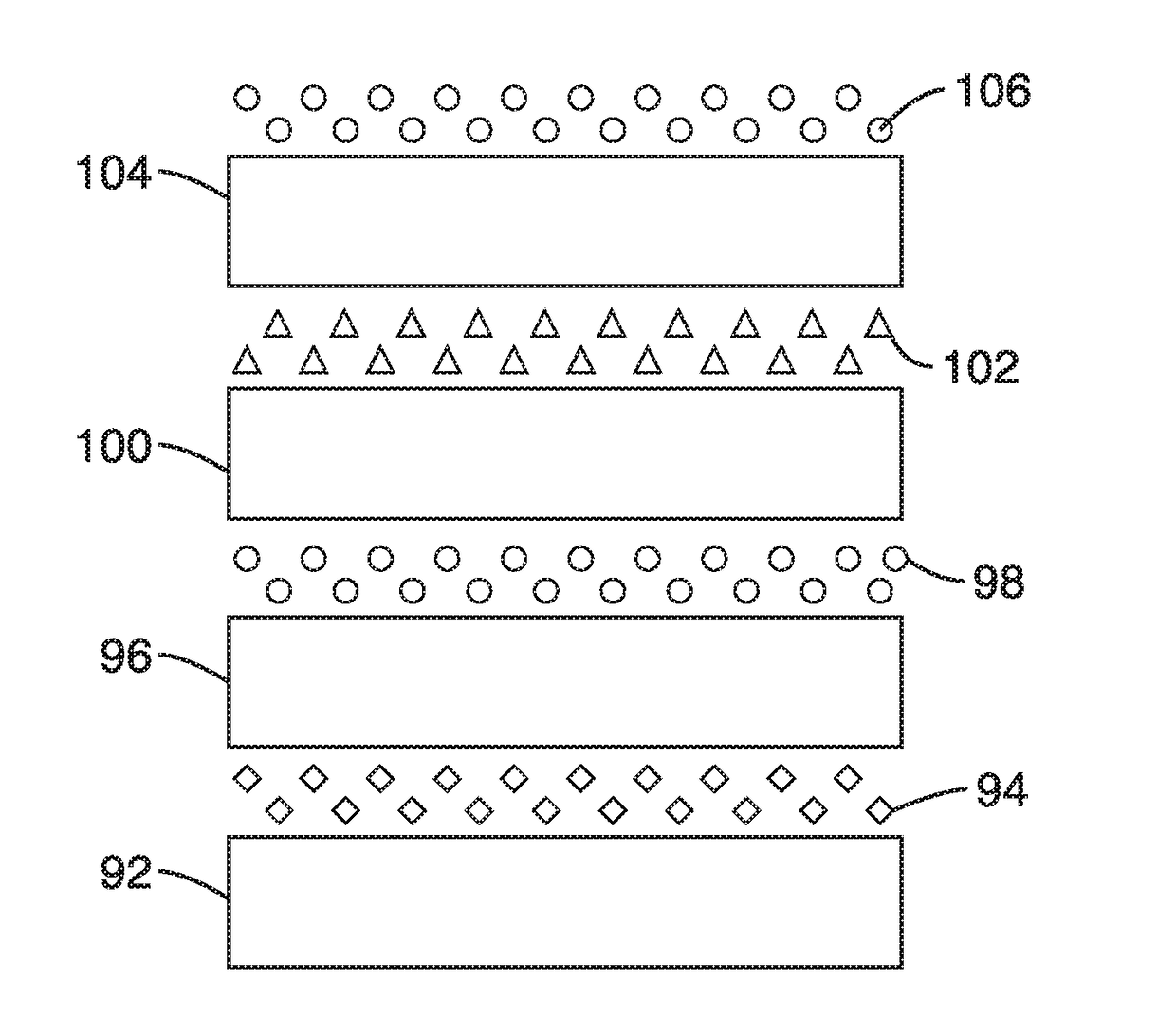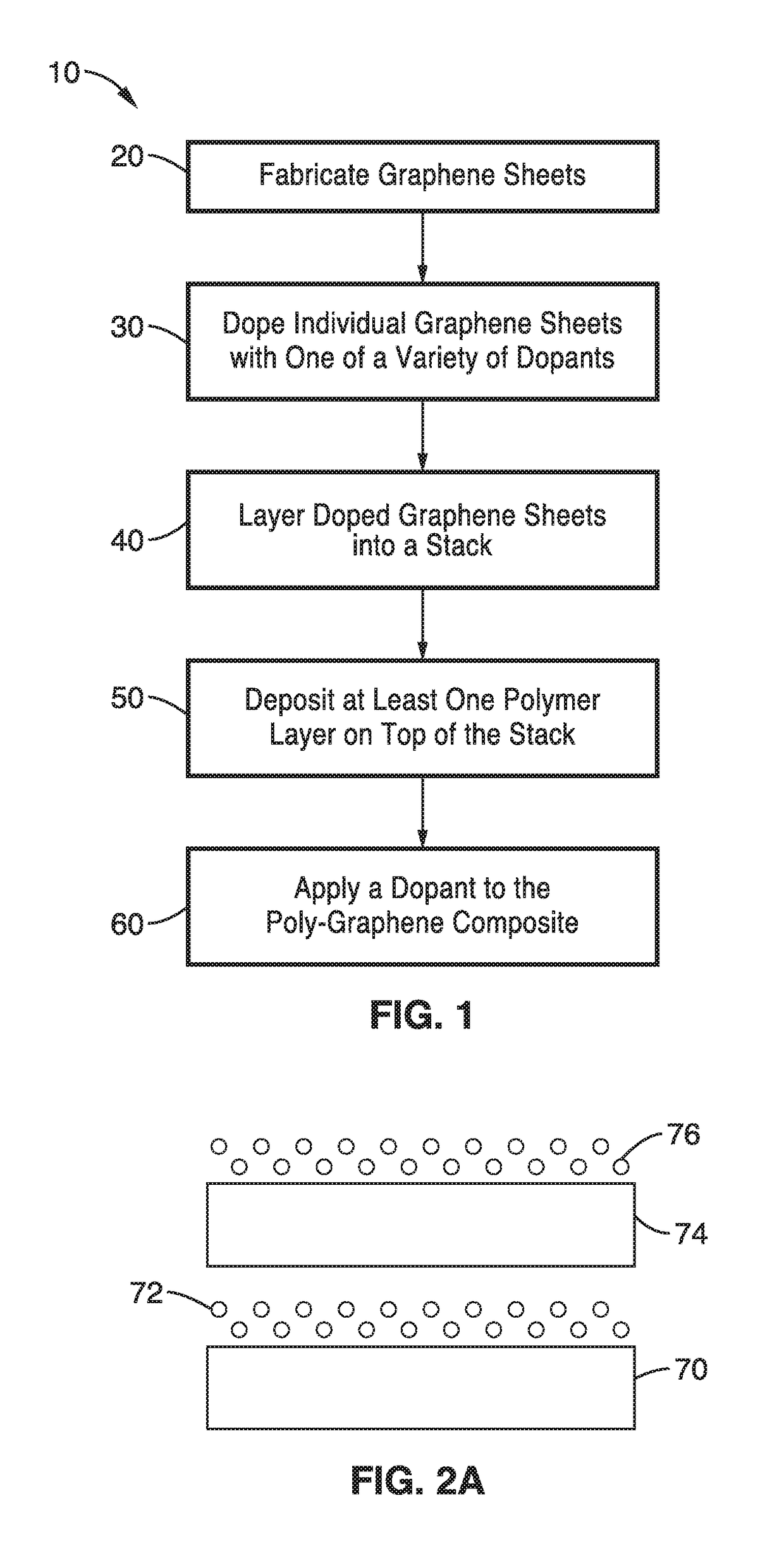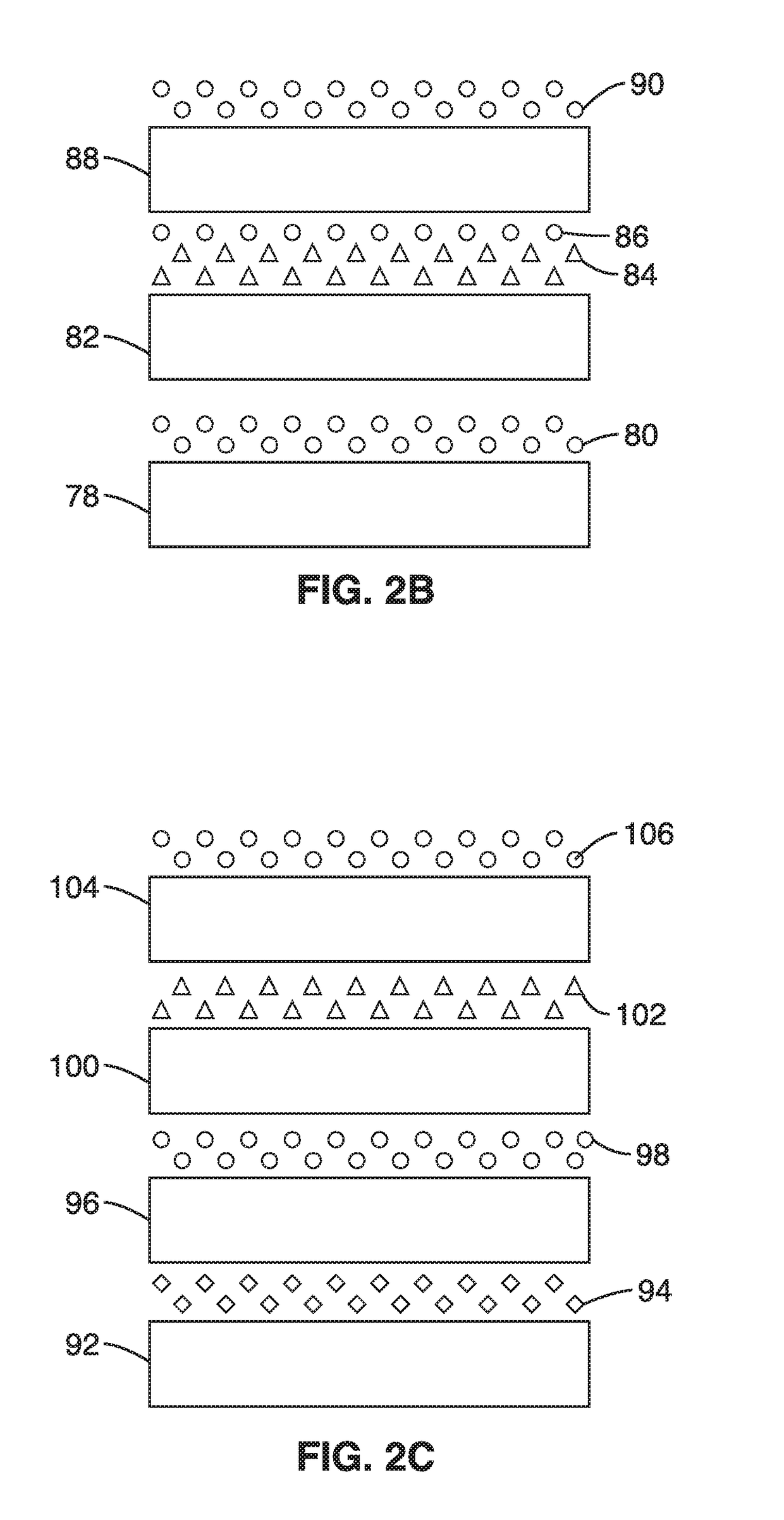Graphene-polymer nanocomposites incorporating chemically doped graphene-polymer heterostructure for flexible and transparent conducting films
a graphene-polymer heterostructure and graphene-polymer technology, applied in the direction of non-metal conductors, instruments, conductors, etc., can solve the problems of brittleness of inflexible ito films, dramatic increase in film resistance under compressive stress, and inability to adapt to flexible electronics technology. , to achieve excellent optical transparency, excellent electrical conductivity, and conductive layer flexibility
- Summary
- Abstract
- Description
- Claims
- Application Information
AI Technical Summary
Benefits of technology
Problems solved by technology
Method used
Image
Examples
example 1
[0059]In order to demonstrate the operational principles of the transparent flexible, and conductive polymer-graphene composite fabrication methods and devices, various composite films were fabricated and evaluated to demonstrate control over the film structure and functional characteristics. The method of fabrication of flexible conductive composites as generally depicted in FIG. 1 was preformed and the composite properties and composite performance were evaluated.
[0060]Single layered graphene was synthesized using low pressure chemical vapor deposited (LP-CVD) system on 100 μm thick Cu foil. First, Cu foil was annealed for 5 hours at 1020° C. under 145 standard cubic centimeters per minute (sccm) argon and 29 sccm hydrogen gas mixture followed by chemical polishing using a Cu etchant solution (CE-100, Transene Company, Inc.).
[0061]Second, graphene growth was conducted at 1000° C. for 30 min under 500 mTorr with a 113 sccm methane and 12 sccm hydrogen gas mixture. Graphene sheets w...
example 2
[0064]The characteristics of polymer-graphene composites with single graphene sheets with different polymer thicknesses and dopants. Initially, the transmittance spectra of graphene and polymer (PEDOT:PSS) films with different thicknesses transferred on top of a PET substrate were evaluated. Single layer graphene sheets produced around 97.5% transmittance at 550 nm. Two and three layers of stacked graphene films resulted in a reduction in transmittance around 94.8% and 92.3% respectively as expected. In comparison, 46 nm, 241 nm and 1260 nm thick PEDOT:PSS films show transmittance in the range of 96.7%, 91.7% and 81.3% respectively at 550 nm. It was observed that transmittance in graphene decreased slightly below 500 nm and transmittance in PEDOT:PSS reduced drastically in NIR regions.
[0065]Electrical sheet resistances of these graphene sheets and PEDOT:PSS films were also compared. The Rs and transmittance of both decreased with increasing thickness of the graphene and PEDOT:PSS fi...
example 3
[0074]To further demonstrate the device functions and structure options, graphene-polymer composites with multiple graphene sheets, different dopants and polymer films with different thicknesses were produced and compared with conventional ITO films.
[0075]Since sheet resistance and transmittance decrease with increasing film thickness in graphene and polymer thin films, the transmittance and resistance of the composites can be optimized. The film thickness adequate for 90% transmittance resulted in around 150 Ω / sq sheet resistance both in the individual or few layered graphene and PEDOT:PSS films.
[0076]Sheet resistance was reduced by chemical doping of the graphene sheets. The sheet resistance was reduced in single layered graphene from 491 Ω / sq to 348 Ω / sq, 257 Ω / sq, and 181 Ω / sq without altering transmittance using HNO3, AuCl3, and TFSA doping respectively. It should be noted that the single layered graphene doped by HNO3 results marginally higher transmittance of 98.1% compare to...
PUM
 Login to View More
Login to View More Abstract
Description
Claims
Application Information
 Login to View More
Login to View More - R&D
- Intellectual Property
- Life Sciences
- Materials
- Tech Scout
- Unparalleled Data Quality
- Higher Quality Content
- 60% Fewer Hallucinations
Browse by: Latest US Patents, China's latest patents, Technical Efficacy Thesaurus, Application Domain, Technology Topic, Popular Technical Reports.
© 2025 PatSnap. All rights reserved.Legal|Privacy policy|Modern Slavery Act Transparency Statement|Sitemap|About US| Contact US: help@patsnap.com



